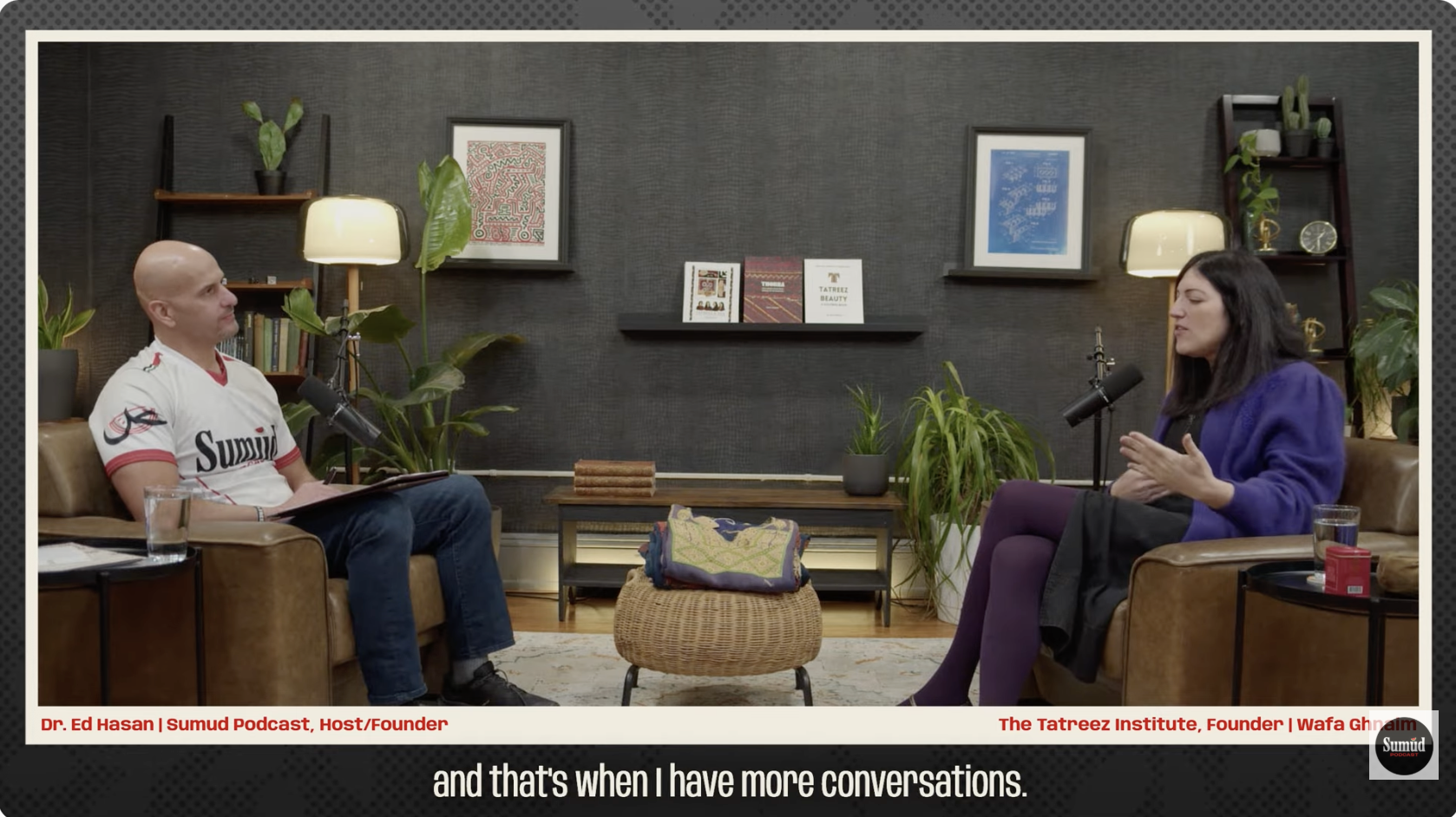Hello, dear friends of the Tatreez Institute,
It has been a long time since we connected, and I wanted to share a few updates from my side.
I am now welcoming in-person bookings for the spring, especially April (Arab American Heritage Month) and May (Nakba Month). If your community, classroom, or museum would like to host a lecture, please begin thinking about budgeting and travel so we can plan ahead. After you have finalized your budget and timeline, you can reach me directly at wafa@tatreezandtea.com to make your request.
For those waiting on printed archival books, I’ve created a waitlist so I can better understand how many people are interested, and whether they need domestic or international shipping. You will be contacted first before I open the order process to the public.
As part of a Mellon Foundation project for the Museum of the Palestinian People called Bayt wa Balad, I am seeking Palestinian oral histories about the right-of-return iron key. The form includes prompts to help support your storytelling, as well as information on how the oral histories will be used. If you are interested in contributing your story, please submit through this form:
And if you happen to be in the UK this month, I’ll be in conversation with Rachel Dedman, curator of Thread Memory at the Victoria & Albert Museum. We’ll be “Talking Tatreez” together in London on November 26, and I’ll also be speaking in Dundee on November 28 for “Behind Thread Memory,” offering a look into the trajectory of our research practices, as well as the stories that shaped the exhibition. If you’re nearby, I would love to see you there.
Recently, I worked with my childhood favorite place, the Ledding Library of Milwaukie, to recatalogue my books in their holdings from 764.44 (embroidery/textile arts) to 391.009 (costume and personal appearance in history, anthropology, and culture). This marked a significant moment as my work began to be included with Widad Kawar, Shelagh Weir, Maha Saca, and Hanan Munayyer. The important distinction that also serves as justification to librarians is that the book highlights history and culture, with a lesser emphasis on technique. Check your local library to see if they have my book accessioned correctly on their shelves!
Lastly, I’ve been using every spare moment to tag and catalog the Tatreez Institute collection so that, one day, it can be shared online. Right now, the collection includes 189 objects, with about 75% from Palestine and the rest representing Syria (14%), Egypt (4%), Jordan (2%), Sinai (2%), and neighboring regions connected by trade and shared material histories. The Institute continues to collect with a focus on research, especially historic embroidery, headdresses, face veils, and jewelry. My goal is long-term stewardship, not speed, and I’m grateful for this community’s patience as I build work that will last. I continue to maintain the ethics to resist purchasing cultural heritage material, and rely on your object donations to keep growing the collection.
Thank you for your continued interest in my work! This past year has marked significant accomplishments in the area of publication and research for me. Last month, my dear friend Joanna Barakat published Narrative Threads: Palestinian Embroidery in Contemporary Art (2025) that includes one of my essays about ethical historical contextualization of the art form. Publications take a long time to make their way to the public, but I’m trying to do things in a way that honors Palestinian cultural heritage at a pace I can sustain for the rest of my life. I’m grateful that this community allows room for me and my ways.
Warmly,
Wafa
P.S. A Ramallah overcoat dress (jellaya) from the mid to late nineteenth century is now on view at the Art Institute of Chicago, in the exhibition On Loss and Absence. I wrote a catalogue essay about the history, meaning, and maker of this jellaya. My teacher and mentor, Hanan Munayyar, read my essay and shared that she was impressed by the research and that the methodology reflects the right path forward for preserving Palestinian heritage. Her words meant a great deal to me. If you’d like to read the exhibition catalogue, you can order a copy here, or ask your local library to carry it.
Teaching about the jellaya this past weekend at Textile Society of America: Textiles Close Up program at the Art Institute of Chicago this past weekend.


